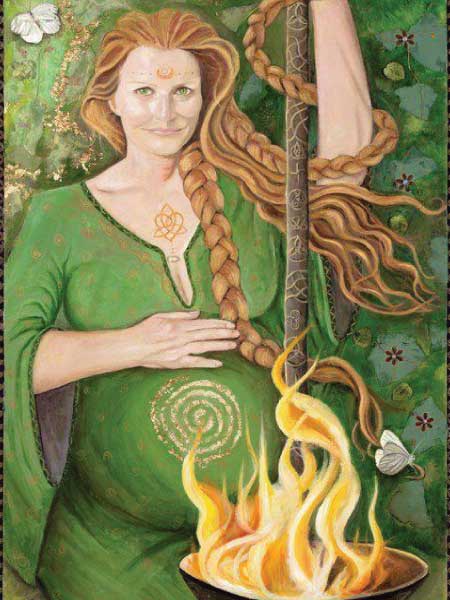Celtic Gods And Goddesses
In the misty realm of the ancient Celts, where dense forests enveloped the land and rivers flowed their course to the sea, worshipping gods was an integral part of life. In their pantheon of magnificent beings were those who embodied the power of nature, wisdom, and authority.
Morrigan
Morrigan stands as one of the enigmatic and renowned goddesses within Celtic mythology. Her essence embodies facets of a warrior, a seer, and a deity of death, portraying her as both a guardian and a formidable harbinger of destiny.
In Celtic tradition, Morrigan is frequently linked with the crow, symbolizing her presence. She is associated with warfare and the fate of warriors, often manifesting on battlefields in the guise of a crow, signaling either death or triumph. Morrigan is also revered as a guardian of warriors and tribes.
Her depiction encompasses various dimensions of feminine power, ranging from the ferocity and relentlessness of combat to wisdom and inner resilience. Among the ancient Celts, her presence evoked a blend of fear and reverence.
Additionally, Morrigan is intertwined with the cyclical rhythm of life and death, mirroring the Celtic belief in the perpetual cycle of birth, demise, and renewal. Her influence extended across Ireland and Scotland, where her name resonates in numerous myths and legends.
While Morrigan emerges as a multifaceted and mystical figure, her portrayal commands respect and admiration, with her role in Celtic mythology remaining a captivating and intriguing subject for exploration.
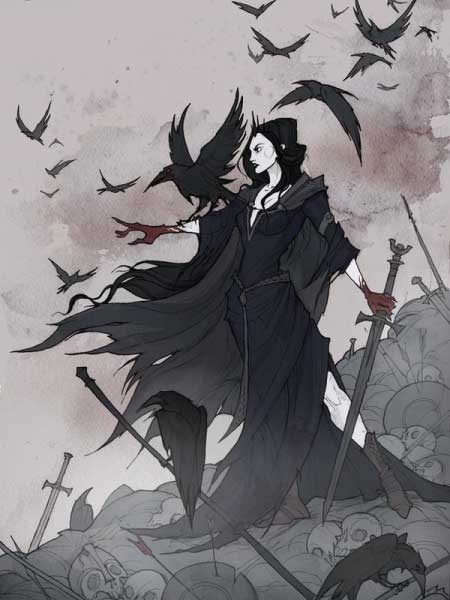
Lugh
Lugh, a central figure in Celtic mythology, is revered as a deity possessing an extraordinary range of talents and abilities. He embodies the roles of warrior, craftsman, ruler, and hero, rendering him a figure of immense versatility and admiration within Celtic tradition.
Associated with various crafts, particularly metalworking and smithing, Lugh is regarded as a master of all trades, demonstrating exceptional skill in every endeavor he pursues. Additionally, he is renowned for his prowess in battle, celebrated for his courage and martial skills on the battlefield.
Lugh holds a significant position as a solar deity, representing the vigor and vitality of the sun. Throughout Celtic mythology, he is often linked with the harvest and the cyclical rhythms of the seasons, symbolizing the abundant blessings bestowed by nature.
In his role as a divine monarch, Lugh is believed to have ruled over the Tuatha Dé Danann, a mythical race of deities in Irish lore. His governance is characterized by wisdom and fairness, earning him admiration as a just ruler who fosters prosperity and security for his subjects.
One of the most renowned narratives involving Lugh is the Second Battle of Mag Tuired, where he plays a pivotal role in leading the Tuatha Dé Danann to triumph over their foes, the Fomorians. His strategic acumen and valor in combat further enhance his status as a legendary hero in Celtic mythology.
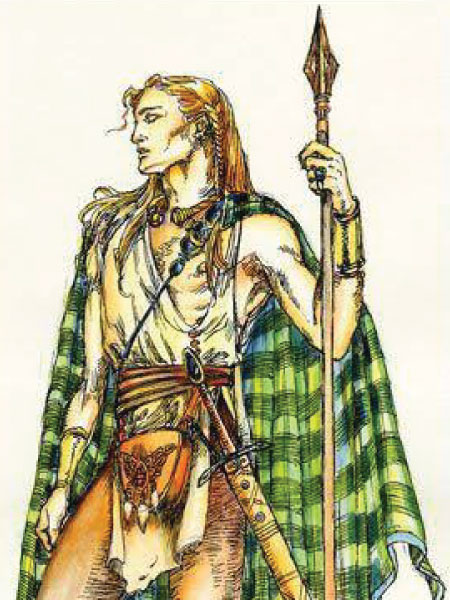
Dian Cecht
Dian Cecht, a significant character in Celtic lore, is esteemed as the deity of healing and medical knowledge. His name, meaning "swift hand," highlights his expertise in the realms of healing and rejuvenation. Within the Tuatha Dé Danann, the mythical pantheon of Irish tradition, Dian Cecht occupies a crucial position.
As the divine healer, Dian Cecht possesses unrivaled understanding of herbal remedies, surgical procedures, and magical cures. Portrayed as a skilled healer, he is believed capable of remedying any affliction or wound. In Celtic myth, he is credited with crafting the "Well of Sláine," a mystical spring renowned for its potent healing properties.
However, Dian Cecht's narrative is also fraught with tragedy and discord. According to legend, his son, Miach, surpasses him in medical prowess, leading to feelings of envy and resentment. Consumed by jealousy, Dian Cecht ultimately takes his son's life. Yet, from this sorrowful act, his daughter, Airmed, gathers and preserves the healing herbs that sprout from Miach's burial site.
The tale of Dian Cecht illustrates the complexities of human emotions and the repercussions of envy and pride. Despite his imperfections, he remains a revered character in Celtic lore, lauded for his contributions to the healing arts and medicine.
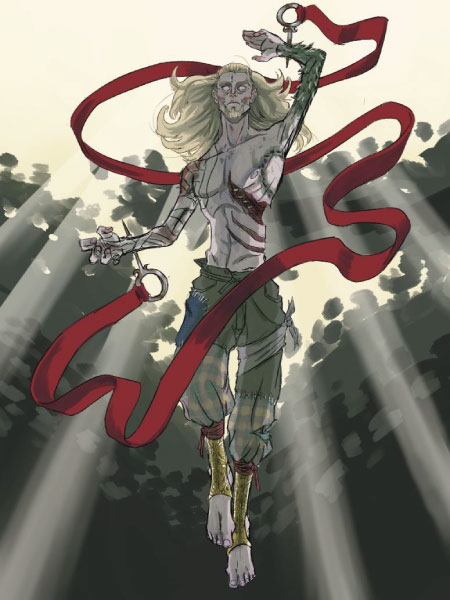
Creidhne
Creidhne, a prominent deity in Celtic lore, is revered as the god of craftsmanship and metalworking. Among the Tuatha Dé Danann, the mythical race of gods and idols in Irish lore, Creidhne holds a significant position as the master artisan and smith.
As the divine craftsman, Creidhne is celebrated for his exceptional skill in forging and shaping metals. He is often depicted as a skilled blacksmith, capable of creating intricate and finely detailed works of art. In Celtic folklore, Creidhne is credited with crafting legendary weapons and tools imbued with magical properties.
One of Creidhne's most renowned creations is the "Sword of Nuada," a strong weapon wielded by the king of the Tuatha Dé Danann. This sword is said to possess the ability to cleave through any obstacle and bring victory to its wielder in battle.
In addition to his prowess as a blacksmith, Creidhne is also associated with other forms of craftsmanship, including jewelry-making and metal sculpture. His creations are revered for their beauty, craftsmanship, and symbolic significance within Celtic culture.
Creidhne's role as the god of craftsmanship underscores the importance of artistry and creativity in Celtic society. His mythological fables serve as a testament to the value placed on skilled craftsmanship and the transformative power of artistic expression.
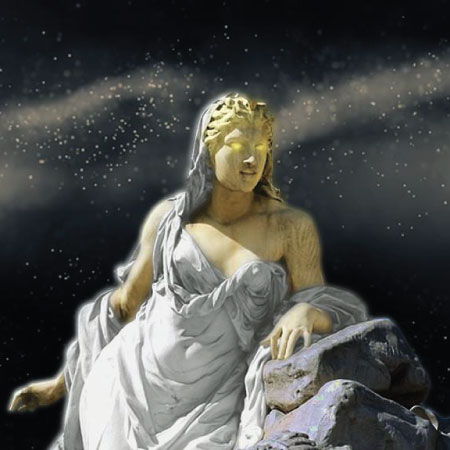
Luchtaine
Luchtaine, a significant deity in Celtic lore, is revered as the patron god of carpentry, woodworking, and craftsmanship within the Tuatha Dé Danann, the mystical race of deities in Irish lore. Renowned as the master artisan and builder among his divine kin, Luchtaine holds a prominent position in Celtic folklore.
As the divine carpenter, Luchtaine is celebrated for his extraordinary skill in the manipulation of wood and the creation of intricate structures. Portrayed as a talented woodworker, he possesses the ability to craft finely detailed furniture, buildings, and tools. In Celtic legends, Luchtaine is credited with constructing legendary edifices and objects endowed with magical properties.
Among Luchtaine's most illustrious creations stands the "Harp of Dagda," a mystical instrument renowned for its ability to soothe hearts and inspire courage. This harp is said to wield the power to bring harmony to the natural world and captivate all who listen to its melodies.
In addition to his mastery as a carpenter, Luchtaine is also associated with other forms of craftsmanship, including stonemasonry and architecture. His creations are revered for their beauty, artistry, and symbolic significance within Celtic culture.
Luchtaine's role as the god of carpentry underscores the significance attributed to skilled craftsmanship and construction in Celtic society. Through his mythic narratives, the value of craftsmanship and the transformative impact of artistic expression are emphasized.
Through his legendary works and contributions to the realm of woodworking, Luchtaine remains a revered symbol of craftsmanship, creativity, and ingenuity in Celtic lore. His legacy serves as an inspiration to artisans and builders, emphasizing the enduring importance of artistic excellence in Celtic cultural heritage.
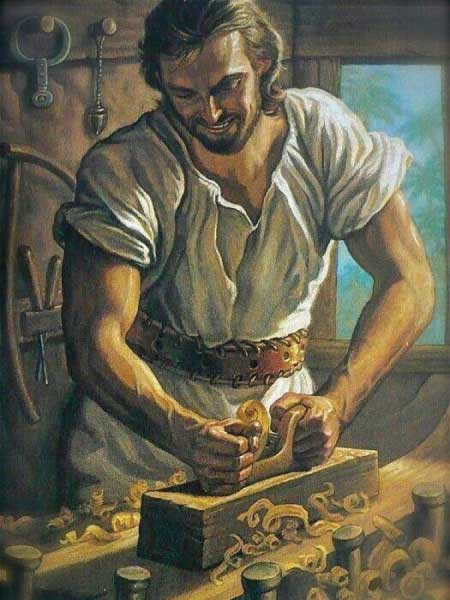
Taranis
Taranis, also referred to as Taranus, is a deity venerated in the ancient Celtic faith, particularly among the Gaulish people. He is commonly portrayed as a god of thunder, lightning, and storms, embodying the might and intensity of elemental forces.
In Celtic lore, Taranis holds a revered status as a powerful character linked with the celestial realm and the skies above. His name originates from a Proto-Celtic term signifying "thunder," indicative of his role as a deity associated with thunderstorms. Frequently depicted wielding a thunderbolt or a wheel, these symbols represent his dominion over lightning and the heavens.
As a god of storms, Taranis was worshipped for his ability to bring rainfall and fertility to the earth, ensuring the prosperity of agriculture and livestock. Nevertheless, his formidable power also instilled fear, as storms and lightning were viewed as both life-nurturing and potentially destructive phenomena in ancient societies.
The worship of Taranis was widespread among Celtic communities, and evidence of his reverence can be found in various inscriptions and artifacts throughout Europe, particularly in regions influenced by Gaulish culture. He was often invoked in ceremonies and offerings aimed at pacifying his wrath or seeking his benevolence.
Despite the passage of time and the decline of Celtic religious practices, Taranis remains a captivating character in the realm of ancient lore and spirituality. His association with natural elements continues to resonate, offering modern interpretations of the awe-inspiring power and majesty of the natural world.
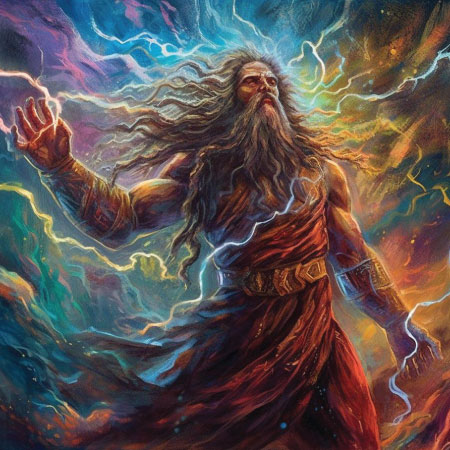
Merlin
Merlin, alternatively known as Myrddin in Welsh tradition, stands as a legendary character within Celtic lore and the tales of King Arthur. Revered as a formidable wizard, seer, and counselor to rulers, his origins lie deeply rooted in Welsh and Celtic lore.
Within Celtic mythos, Merlin is closely associated with the mystical practices of druidism, esteemed as a sagacious and enigmatic character endowed with the gift of foresight and the ability to wield extraordinary magic. His understanding of nature, the elements, and the arcane forces that govern the universe is said to be profound.
However, Merlin's most renowned role stems from Arthurian legend, where he assumes the pivotal position of advisor and mentor to King Arthur. According to the tales, Merlin plays an instrumental role in Arthur's conception and upbringing, guiding him toward his destined role as the legendary ruler of Camelot.
Throughout the Arthurian narratives, Merlin is attributed with a multitude of miraculous feats, including the establishment of Camelot, the formation of the Round Table, and the enchantment of the legendary sword Excalibur. Additionally, he is credited with orchestrating the quest for the Holy Grail and the defeat of Arthur's adversaries.
Merlin's character embodies the archetype of the wise sage and the cunning trickster, possessing a blend of profound wisdom and playful mischief. His enduring mythic status has inspired countless adaptations across literature, art, and popular culture, solidifying his status as one of the most iconic characters in Celtic and Arthurian lore.

Aine
Aine, a deity in Celtic lore, occupies a significant role in Irish folklore as a character associated with love, fertility, and the natural environment. Revered as a symbol of sovereignty and the summer season, Aine embodies the vitality and nourishing qualities attributed to the sun and the earth.
In Celtic lore, Aine is often portrayed as a luminous and benevolent presence, representing the abundance of the land and the benevolence of nature. She is esteemed for her ability to foster growth, prosperity, and harmony within the natural world.
As a goddess of love and fertility, Aine is believed to possess the ability to bestow blessings upon couples seeking to marry or conceive. Additionally, she is linked with the seasonal cycles, particularly the summer solstice, when her influence is believed to be most potent.
Beyond her associations with love and fertility, Aine is also honored as a guardian of sovereignty and justice. According to Irish lore, she is said to have governed over a sacred hill known as Knockainey, where she administered wisdom and fair judgment to her followers.
Despite her benevolent nature, Aine is also depicted as possessing a fiery and passionate temperament, capable of unleashing wrath upon those who disrespect or offend her. In certain tales, she is portrayed as a formidable warrior deity, fiercely protecting her domain and her people from harm.
Aine's lore reflects the profound reverence and admiration that the ancient Celts held for the natural world and its elemental forces. Her enduring legacy continues to evoke admiration and reverence, serving as a reminder of the perpetual cycles of life, death, and renewal that shape our existence.
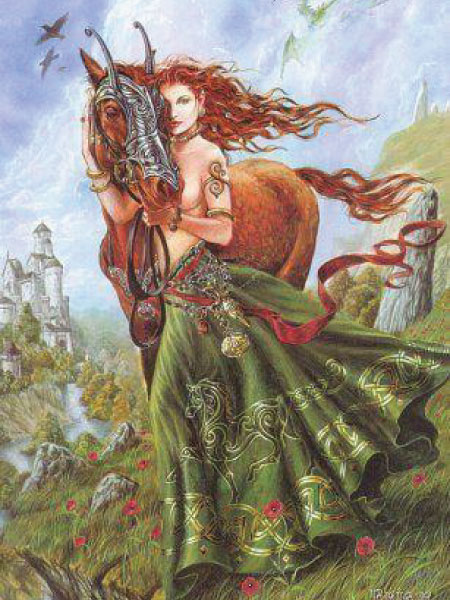
Flidais
Flidais, a goddess in Irish lore, occupies a significant role in Celtic lore as a deity associated with nature, the wilderness, and the safeguarding of animals. Revered as an icon of the forest and the hunt, Flidais embodies the raw and untamed aspects of the natural realm.
Within Celtic tradition, Flidais is often portrayed as a resilient and mysterious character, adept at navigating the wilderness effortlessly and commanding the loyalty of wild creatures. She is honored for her role as a guardian of the forest and its denizens, ensuring the equilibrium and symbiosis of the natural environment.
As a goddess of the hunt, Flidais is believed to possess unmatched prowess with the bow and arrow, depicted as a skilled huntress who roams the woodlands in pursuit of game. In certain tales, she is accompanied by a retinue of wild animals, including deer, boars, and wolves, regarded as her faithful companions and attendants.
In addition to her association with the hunt, Flidais is also revered as a provider of nourishment and abundance. In Irish lore, she is said to possess a magical bovine entity known as the "Cow of Flidais," whose milk is inexhaustible and capable of sustaining entire armies.
Despite her affiliation with the wilderness and the unbridled facets of nature, Flidais is also recognized for her empathy and benevolence toward those in need. In various stories, she is depicted as a compassionate character who extends assistance and protection to travelers who find themselves lost in the forest or facing peril from predators.
The lore surrounding Flidais reflects the profound reverence and regard that the ancient Celts held for the natural world and its inhabitants. Her enduring legacy continues to evoke admiration and wonder, serving as a poignant reminder of the interconnectedness of all living beings and the imperative of conserving and safeguarding the environment.
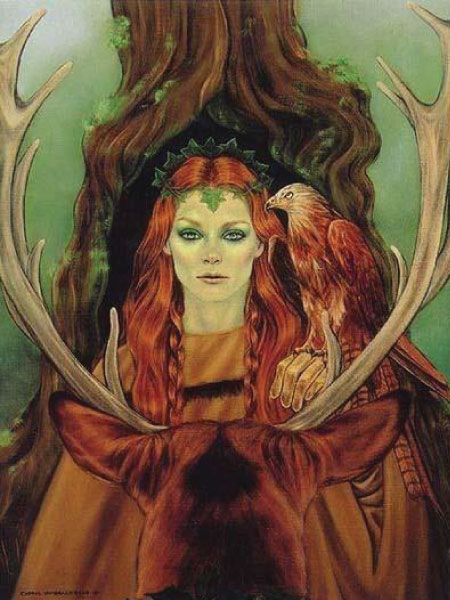
Caireen
Caireen, also recognized as Carian or Carianne in certain Celtic traditions, is a deity less explored in Celtic lore, particularly within Irish folklore. She is commonly depicted as a goddess associated with the realms of motherhood, childbirth, and fertility.
In Celtic lore, Caireen holds a significant role as a guardian of expectant mothers and newborn infants. Revered for her nurturing and protective attributes, she offers solace and support to women during the vulnerable and transformative experience of childbirth.
As a goddess linked with childbirth, Caireen is believed to possess the ability to alleviate labor pains, ensure the safe delivery of infants, and bestow upon newborns health and vitality. Expectant mothers often call upon her for assistance and safeguarding during pregnancy and childbirth.
Beyond her connections with motherhood and fertility, Caireen is also esteemed as a protector of the natural world and the eternal cycles of life and death. It is believed that she oversees the fertile lands and the abundant bounty of nature, fostering prosperity and harmony among the land and its inhabitants.
Despite her relatively lesser-known status, the lore surrounding Caireen underscores the profound reverence and regard that the ancient Celts held for the sanctity of life and the significance of honoring the natural rhythms of existence. Her enduring legacy continues to evoke admiration and wonder, serving as a poignant reminder of the interconnectedness of all living beings and the nurturing influence of the divine feminine.
